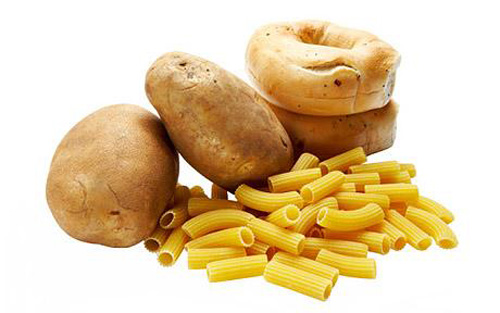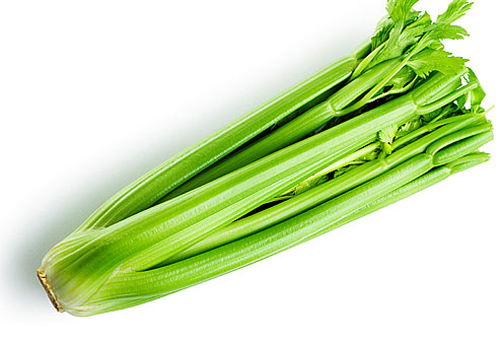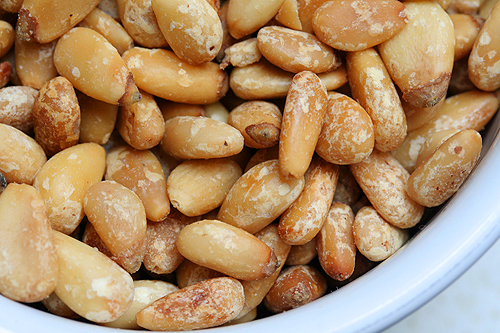The Secret’s of Boxing Health Now Exposed. Know what your body needs.
Have you ever wondered the real reason why a person needs to eat? The first thing that comes into someone’s mind is because you are hungry. Sometimes because you are tired or your stomach is rumbling, also you eat because you are happy, sad or bored or the food looks so good or just because its lunch time. The above mentioned reasons are all physical and emotional reasons why you eat. Why is good nutrition important or why does your body need healthy good food?
Reason 1: Good Nutrition Provides Energy
The foods that we eat give energy to our body and that’s what we need in order for our body to function. Carbohydrates are responsible in giving energy to our body. Our body easily digests carbohydrates like sugar and starch which are broken down into the two forms of glucose, the fructose and the galactose. If you don’t have enough carbohydrates, your body can make glucose from protein or fat. Having too much carbohydrates in the body are great at storing them as fat.The Importance of Good Nutrition
Reason 2: Good Nutrition Provides Raw Materials
Amino acids come from protein foods. The body uses the amino acids to build and repair the different parts of the body. A lot of protein is in the muscles therefore you need to replenish them through your diet. Protein is also needed for the components of the immune system, nervous system, hormones and organs.
The body also needs the raw material calcium. This has various functions in the body especially as the mineral that is stored in the bones and teeth. You should include calcium in your diet so as to make your bones and teeth strong. Fats are also needed by the body to stay healthy. Membranes which contain fat surround all the cells of the body. The brain has fatty acids too and fats are needed to signal hormones.
Reason 3: Good Nutrition Act as The “Little Helpers”
The body also need vitamins and minerals but in small amounts only. Both of them functions as co-enzymes meaning they help chemical reactions in the body. For example, vitamin B complex helps the body burn carbohydrates for energy. Vitamin A on the other hand is needed in good vision while Vitamin C keeps connective tissue strong and the immune system to function. Zinc contributes in the metabolic processes. A healthy balanced diet provides the body with lots of vitamins and minerals, thus your diet should provide adequate amounts of these “little helpers.” If your body is deficient from one or more of these little helpers then you have unhealthy diet.
Reason 4: Good Nutrition Aid for More Functions
Other substances found in the food that we eat which are needed in good nutrition phytochemicals. These are found in the colorful parts of fruits and vegetables. Quercetin which is found in red apples functions like an antihistamine and as an anti-inflammatory. Resveratrol on the other hand, which is found in grape skins and seeds, is a powerful antioxidant. This helps in protecting the body from sun damage, pollution, smoke and poor dietary choices.
Reason 5: Good Nutrition Means Good Health
A healthy diet provides the body with the right amount of energy, enough raw materials and all of the “little helpers” too. All of which makes you stay healthy. Good nutrition also provides phytochemicals and antioxidants which make you feel young, looking great and disease-free. Bad diet gives you too much or only few calories, not enough vitamins and minerals and will actually make you need more of the antioxidants than what you are getting.
These are things to remember about the importance of good nutrition. Without good nutrition, your body will fail in terms of its functions.
Have you ever wondered the real reason why a person needs to eat? The first thing that comes into someone’s mind is because you are hungry. Sometimes because you are tired or your stomach is rumbling, also you eat because you are happy, sad or bored or the food looks so good or just because its lunch time. The above mentioned reasons are all physical and emotional reasons why you eat. Why is good nutrition important or why does your body need healthy good food?
The Importance of Carbohydrates, Protein, Enzymes and Hydration
Carbohydrates: Carbohydrates are sugars, starches, and fibers found in most foods. While they are perhaps most famous for their role in fueling our body’s energy needs, carbohydrates (often referred to as “carbs”) actually serve a wide variety of purposes in the body, including regulation of digestion, enabling of communication between cells, and support of immune functions.
Carbohydrates are composed of carbon, hydrogen, and oxygen, which are arranged into small units called sugars, or monosaccharides. Small carbohydrates, like glucose or sucrose (table sugar) are composed of one or two sugar units, respectively, and are the molecules that give food a sweet taste. These molecules are sometimes called “simple sugars” because they are small (only one or two units), and are quickly digested, providing immediate energy to the body.
Larger carbohydrate molecules, which include fibers and starches, are composed of at least twenty or more monosaccharides linked together. These large carbohydrates, called polysaccharides (poly=many) may contain up to several hundred monosaccharides linked together in different ways. Another term commonly used to describe carbohydrates is oligosaccharides, a type of carbohydrate molecule that is in between polysaccharides and monosaccharides in size, and features three to twenty monosaccharides bonded together. You might also hear the term “disaccharides” when carbs are mentioned, and this term refers to molecules that contain two simple sugars.
Protein: The word protein was coined by the Dutch chemist Geradus Mulder in 1838 and comes form the Greek word “protos” which means “of prime importance”. Your body, after water, is largely made up of protein. Protein is used by the body to build, repair and maintain muscle tissue. Protein is comprised of amino acids, usually referred to as the “building blocks of protein”. There are approximately 20 amino acids, 9 of which are considered essential because the body cannot make them, they must be supplied by the diet.
Protein is essential for growth and the building of new tissue as well as the repair of broken down tissue – like what happens when you work out. When you hear the term “positive nitrogen balance”, it refers to being in a state of having enough protein available for the needs of the body and the needs of building muscle. What does nitrogen have to do with protein? Nitrogen is one of the most important elements in all protein (Taber’s Cyclopedic Medical Dictionary, p. n-31). It is essential to animal life for tissue building – this statement alone defines the key need for protein when lifting weights.
For the most part, we are told to eat sufficient protein (every 3-4 hours) to maintain a positive nitrogen balance because your body is actually in an anabolic, or building up phase in this state, where a negative nitrogen balance, from lack of adequate protein, indicates a catabolic, or tearing down state. This is why protein (and eating enough through out the day) is so important: lack of adequate protein, and your body begins to break down tissue (read: muscle) to meet it’s daily protein needs. Our bodies constantly assemble, break down and use proteins (in the form of amino acids, the building blocks of protein), in fact there are literally thousands of different protein combinations used by the body, each one has a specific function determined by it’s amino acid combination (or amino acid sequence).
Virtually all modern authorities agree that 1 to 11/2 grams of protein per lb. of body weight is best for muscle growth. Besides taking in high quality protein from food (lean beef, chicken, turkey, fish, eggs), the best way to keep your protein intake at the proper levels are through the use of protein shakes. The other part of getting the most out of your protein intake and thereby maintaining a positive nitrogen balance is carb and fat intake, both are needed in reasonable amounts to insure protein synthesis.
As far as powders are concerned, whey protein is the best quality, meaning your body will absorb and use more of it. There are several types of whey (isolate, concentrate, hydrolysate), but whey protein isolate remains number one because of it’s high quality. But milk based proteins are making a comeback, largely because of there longer lasting effects in the body: whey is typically touted as a fast digesting protein, milk as a slow digesting protein.
Let me sidetrack for a minute and clear up a common misconception, and pet peeve of mine, regarding grams of protein advertised as being in a basic protein powder (not a “formula” product like Muscle Milk or Syntha 6 which contains more fat and carbs). People always judge a protein powder by the number of advertised grams per serving: “This one only has 17 grams, it’s not as good as this one that has 50 grams!” Wrong, wrong, wrong. Protein contains 4 calories per gram, that’s how it’s measured, meaning that it doesn’t matter what the label says, they are using different scoop sizes and numbers of scoops per serving to get that advertised amount.
Since protein is 4 calories per gram, and scoop sizes are measured in grams, if you used a standard scoop size and quantity, you would get the same amount of protein regardless of the brand name (excepting minor variances for fat and carb content). Test this out yourself, the next time you’re at the vitamin store, compare protein labels. Note the protein, carb and fat per serving. Now note the scoop size and how many scoops equal one serving. You will see that any label with a high advertised protein content is using a large scoop and probably 2 scoops a serving. A smaller scoop and serving amount corresponds to a protein with a lower advertised amount. Don’t be fooled into thinking the 50 grams per serving product is better, they are using a very big scoop to give you that much protein! Base your choice on product quality!
Now let’s get back to my main topic regarding protein. The timing of protein is the key to maintaining a positive nitrogen balance and staying in an anabolic state. You should take in protein every 3 – 4 hours, your protein intake should be evenly divided up throughout the day over the course of 5-6 meals. This can be three main meals and 2-3 high protein snacks or shakes.
Other than that, there are some critical times to take in protein – first thing in the morning, with some simple carbohydrates because you have not eaten since the evening before and your body is in a catabolic state, you should also be sure to take in a protein shake with fast carbs – like fruit – about 1 hour before you train and you should take in a similar shake after you train – this should be, by the way, 40-60 grams of protein and about the same in carbs. Finally, you should have a small protein shake or meal before bed, because during the night you typically fall into a catabolic state.
Enzymes: Each of us has about 75 trillion cells in our body. Each cell depends on enzymes, which are living proteins, to function efficiently. Without enzymes, all of the chemical reactions in our body would come to a halt. All of our tissues, muscles, bones, organs, and cells are run by enzymes
Where do enzymes come from? First of all, our bodies, when they are healthy, produce their own enzymes. Each cell can and does produce the metabolic enzymes that it needs to function normally. The pancreas and endocrine glands (thyroid, adrenals, etc.) produce extra enzymes which they “loan out” to other organs that may need them.
But the second source of enzymes is raw, living food. Raw fruits and veggies are full of enzymes. In contrast, dead, processed, and cooked foods have few, if any, enzymes. Why? Because enzymes die when they’re heated above 118 degrees, or when the food they call home, is chemically processed. That includes just about everything in boxes and cans at your supermarket.
When you eat an apple, banana, or any living food, you put it in your mouth and chew it. The saliva in your mouth is full of digestive enzymes. So the chewed apple heads for your stomach with (1) its own living enzymes, and (2) your digestive enzymes from the saliva.
That makes digestion an easy process for your body. Some of the digestion takes place in your stomach, but much of it takes place in your small intestine. Your stomach turns the apple into chyme, a kind of watery gruel. When the chyme gets to your small intestine, your pancreas secretes enzymes that turn the chyme into a liquid that your body can absorb.
But when you eat DEAD FOOD — a Big Mac, French fries, ice-cream, and diet soda pop — all that food has virtually NO enzymes. You chew it quickly, so it gets coated with very few digestive enzymes from your saliva. And the next thing you know, all that dead, processed food is sitting in your stomach — with few, if any, digestive enzymes to break it down.
What happens? Digestion is a priority in your body, so your stomach sends alarm signals to every cell and organ. “Send me some enzymes ASAP! I’m full of dead food, and I need help quickly!”
Your body responds. It “borrows” enzymes from other places, especially from glands like your thyroid. It may borrow enzymes from your eyes, knees, sexual organs, or any of the other organs in your body. And your stomach uses those borrowed enzymes to help digest the fast food.
You can get away with that for awhile; if you’re lucky, a number of years or even decades. But eventually, those other organs which have been supplying their OWN much-needed enzymes to the stomach and intestines, begin to break down. At that point, you’ve got a chronic health problem.
So what do you do? Two things: The easy answer if to take a digestive enzyme with EACH meal that you eat. Then if you eat a slice of pizza (dead food), your stomach WON’T have to borrow/rob enzymes from other organs. It will use the enzymes in the tablet you ate, to help digest the pizza.
The harder solution is to phase out the dead, cooked, and processed food from your eatinregimen, or at least, to cut down on it. Instead of eating meat twice each day, cut it back to three times a week. Try not to eat cooked food at every meal. If you do eat cooked food, make sure you take a digestive enzyme before you begin eating.
Hydration: One of the most important facets of an effective workout for athletes and boxers when training for boxing is proper hydration. It’s easy to see why hydration can be taken for granted; for many who are not properly informed about proper hydration concepts, hydration involves nothing more than drinking fluids when you are thirsty and then powering on towards completing your workout.
However, those who are aware of the importance of hydration to athletic performance, training for boxing and workout efficiency know better than to take it in stride. Improper hydration habits can lead to serious bouts with dehydration severely impairing one’s ability to perform at the optimum, if not endangering one’s life altogether. Likewise, over-hydrating can lead to conditions ranging from the feeling of being bloated, which can easily slow an athlete down, to more serious cases of hyponatremia which can be fatal for anyone.
In order to continue performing at the highest of levels, when training for boxing, athletes, NFL plyers, runners, and triathletes follow strict guidelines for hydration that allows them to keep their body fluid levels at a near constant rate preventing the nasty side effects of both dehydration and over-hydration.
•The first consideration in hydration is that not everyone losses fluids at the same rate. For many professional athletes, the amount of fluids taken in is a product of repetitive weight measurements that allow them to exactly quantify how much fluid they are losing when doing certain workouts. Beginners can also adopt the same method by weighing themselves before and after exercise and converting that loss in weight to its water volume equivalent. As a guideline, losing a pound of body weight during training for boxing means one lost 24 ounces of fluid in that same span. To prevent dehydration, this exact fluid content should be duly taken back in during and shortly after the workout.
•It is very important to remember that hydration should be done in a gradual manner to match the rate at which one is losing fluids. As a rule of thumb, a cup of water every twenty minutes is sufficient, depending of course on the workout conditions whilst training for boxing. When exercising for extended periods or in hotter climates, this fluid intake rate may have to be doubled to compensate for the higher rate at which fluids are being lost from the body.
•Hydration is not only limited to that period when one is already working out. Many athletes actually increase their hydration rates in the days leading to a big race or competition. This is to anticipate the extra demands that the body is subjected into during the actual workout, or race, thus allowing them to continue performing at a high level for longer periods.
•Athletes also rigorously practice proper hydration even when they are not in training or competition. We are very used to hearing that drinking eight glasses of water a day is ideal but the truth is, the more water you can drink per day, the better hydrated you are and the better your body will perform. The acceptable guideline is to aim for 1.5 liters (the volumetric equivalent of 8 glasses) as a minimum and then going over this number to maximize fluid intake per day. Aiming for 3 liters per day is an even better goal because this will help improve one’s ability to handle extra fluid intake while working out.
•Proper hydration when training for boxing and for athletes also requires that athletes depend on sports drinks to replenish electrolytes in their body. When we perspire, we lose sodium and potassium, two vital elements that are essential to muscular performance. Sports drinks are specifically formulated to provide a steady dose of these elements so the amount lost is duly replaced enabling the body to continue performing for extended periods of time.
Hydration is not something that anyone can take for granted, and the importance is easily magnified when referring to athletes, runners, and those who live an active lifestyle. Proper hydration requires a clear understanding of the amount of fluid to be taken in, as well as the timing, and the enhancements and extra nutrition that can be added to the liquids to enable the body to sustain peak performance for prolonged periods.
Remember, hydration for boxers when training for boxing and for athletes can do a lot to help you achieve your performance goals if you are willing to commit to learning the vagaries that will transform your hydration habits from just being another quirk to a competitive advantage on race day or fight night.




